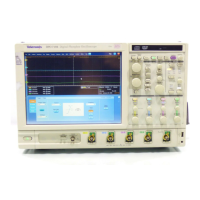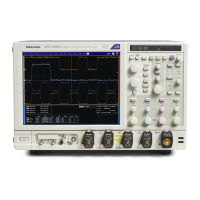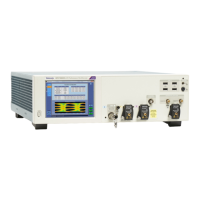The high input resistance of passive probes (typically 10 MΩ) provides negligible DC loading and provides accurate DC
amplitude measurements.
Most passive probes require the instrument input impedance to be 1 MΩ. However, their 8 pF to 12 pF (over 60 pF for 1X)
capacitive loading can distort timing and phase measurements.
Use high resistance passive probes for measurements involving the following:
■
Device characterization (above 15 V, thermal drift applications)
■
Maximum amplitude sensitivity using 1X probe
■
Large voltage range (between 15 V and 500 V)
■
Qualitative or go/no-go measurements
Active Probes
Active voltage probes often contain preamplifiers that provide high resistance and low capacitance at the probe tip. Some active
voltage probes contain differential amplifiers that provide high Common Mode Rejection Ratio (CMRR).
Active current probes often contain Hall-effect sensors that extend the probe bandwidth down to DC.
Many active probes, especially high frequency probes, can drive a 50 Ω instrument input.
Coupling controls
From the Vertical menu, select Coupling.
Overview
Use the Termination control window to select the input coupling.
For MSO/DPO70000C/DX model oscilloscopes, DC coupling is the only selection.
The following screen appears on MSO/DPO5000B Series instruments:
Vertical setups
490 DPO70000SX, MSO/DPO70000DX, MSO/DPO70000C, DPO7000C, and MSO/DPO5000B Series

